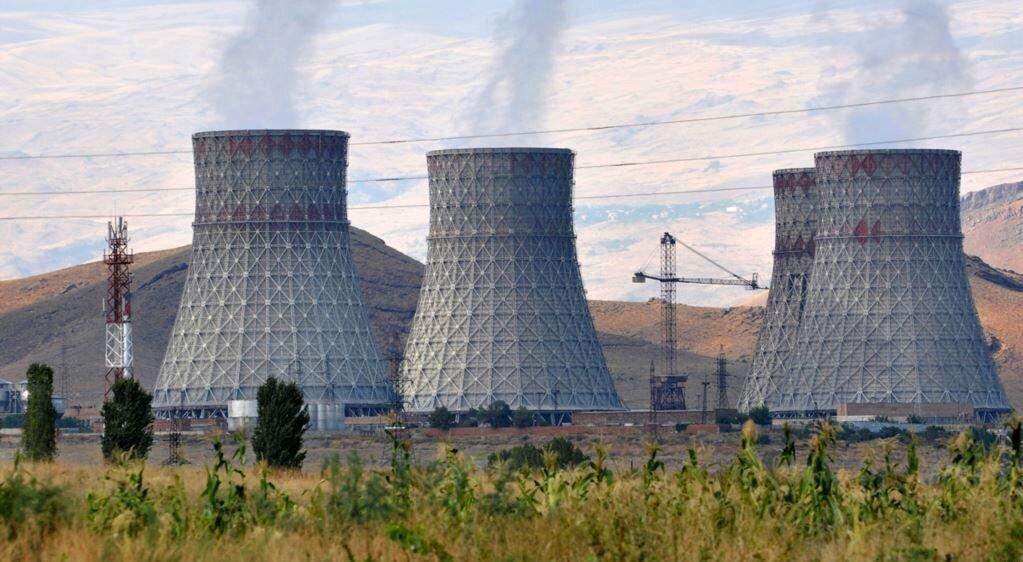Armenia’s “symbol of sovereignty” - source of ecoterrorism Radioactive barrel of South Caucasus
The Armenian leadership appears to continue exposing the region to radioactive danger by using the morally and physically outdated Metsamor nuclear power plant, despite the international community’s calls to close it.
Thus, while delivering a speech at the international summit on nuclear energy, which is held in Brussels by the International Atomic Energy Agency (IAEA) and Belgium, Armenian Prime Minister Nikol Pashinyan stated that Armenia intends to commission a new power unit of this nuclear power plant by the end of the service life of the current one in 2036.
“We acknowledge the indispensable technical assistance, knowledge and recommendations from the IAEA and partner countries, which played an important role for the safe and reliable operation of our nuclear power plant,” the Armenian prime minister said.
He reminded that the Armenian authorities decided in December 2023 to extend the operation life of the nuclear power plant from 2026 to 2036.
“This will lay a solid foundation for a smooth transition to a new power unit at the end of the extended life of the plant, which is our ultimate goal. In this regard, Armenia is committed to the close cooperation with the IAEA and partner countries to find the optimal solution to replace the current power unit,” Pashinyan said.
He referred to the fact that the nuclear power plant is Armenia’s “symbol of the sovereignty”.
It is obvious that the Armenian prime minister did not have any other “symbol” to justify his steps, which pose new threats for the region.
The Armenian prime minister’s eloquence shows his attempts to convince almost the whole world, firstly, that the nuclear power plant plays a key role in Armenia’s energy system and ensures the stability of energy production, and secondly, that Armenia allegedly complies with all safety measures at its nuclear power plant upon the IAEA’s instructions.

The representatives of the Azerbaijani civil society sent an open letter to the leadership of the Nuclear Energy Summit calling for paying attention to the global threat posed by the Metsamor nuclear power plant.
Azerbaijan intends to raise the issue of the Metsamor nuclear power plant at the main climate summit in Baku, to be held this autumn.
Accordingly, Armenia will have to decide whether to remain a country with dangerous, dirty nuclear energy or try, following the example of many countries, including Azerbaijan, to develop “green” energy.
The Azerbaijani side’s concern is understandable, because the matter rests in the nuclear power plant built back in the 1970s.
After a temporary stop in its operation in 1989, six years later (in 1995) the nuclear power plant was reactivated in the presence of the Russian specialists, after which commercial operation of the second power unit of the plant resumed.
Of course, this event even then confirmed the Armenian authorities’ unwillingness to close the harmful plant.
Along with Türkiye and Azerbaijan, which have repeatedly called for closing the Metsamor nuclear power plant, the EU has also repeatedly expressed great concern.
Ritmeurasia.org reported back in April 2019 that an agreement was signed between Yerevan and Brussels in September 1999 to close the Metsamor nuclear power plant in 2004.
The Armenian authorities made similar commitments upon joining the Council of Europe in 2001. At the same time, Brussels expressed its readiness to provide Yerevan with funds for the mothballing of the nuclear power plant.
Yerevan committed to drawing up a schedule for the closure of nuclear power plant as part of the EU-Armenia Comprehensive and Enhanced Partnership Agreement (CEPA) on November 24, 2017. However, the Metsamor Nuclear Power Plant was not closed.
The French Le Monde diplomatique newspaper wrote in November 2017 that an outdated nuclear power plant located in a seismically dangerous zone poses a great risk for entire Europe.
The article, entitled “Metsamor - the second Chernobyl”, described the threats and consequences of a possible accident at a nuclear power plant.
The EU offered financial assistance worth 100 million euros to close the nuclear power plant, the newspaper wrote.
According to the newspaper, Armenia refused the assistance and continues using the nuclear power plant, putting the lives of millions of people at risk.
A strong earthquake in the adjacent territory may cause a big disaster not only in the Caucasus, but also in Europe and the Middle East, the article says.
The US Bulletin of the Atomic Scientists journal described In March 2021 the threat associated with the operation of the Metsamor nuclear power plant in Armenia, calling for its closure.
International energy and foreign policy specialist and a research faculty member at the US Naval Postgraduate School Brenda Shaffer wrote in her article that in every official report regarding the implementation of the European Neighbourhood Policy, the EU emphasised the need to close the Metsamor nuclear power plant.
The CEPA included a clause in which the EU demanded to close the nuclear power plant in Metsamor and adopt a “road map” or action plan as soon as possible to “create alternative opportunities for Armenia’s stable development”.
Unfortunately, despite the EU even provided Armenia with funds to search for alternative energy sources, Yerevan did not use these funds for the intended purpose. The Armenian authorities entered into other agreements with Russia to extend the life of the reactor.
International experts and environmental non-governmental organisations (NGOs) continue expressing concern, warning that Armenia has turned Metsamor into a potential nuclear threat rather than into an energy source.
This nuclear power plant may turn entire Armenia into a giant nuclear burial ground. However, some Armenians also boast that they can create a “dirty bomb”.
Azerbaijani President Ilham Aliyev also pointed out the danger of the Metsamor nuclear power plant when he received IAEA Director General Rafael Mariano Grossi in March 2023.
Thus, touching on the problem of nuclear safety, President Aliyev said that the Metsamor nuclear power plant operating in Armenia poses a great nuclear threat to Azerbaijan, Türkiye and the entire region.
He noted that the plant operates upon old technologies and has big technical problems and emphasised that the illegal trade in some nuclear materials obtained through the Metsamor nuclear power plant is a cause for concern.

Russian engineer-physicist and expert on the Russian Social and Ecological Union Radioactive Waste Safety programme Andrey Ozharovsky has recently noted in a conversation with Caliber.Az that nuclear facilities in case of an accident pose a big threat not only to nearby countries, but also to regions which are far from it.
“In this context, I see only negative trends, for example, attempts by my country, Russia, not to allow Armenia, neighbouring Azerbaijan, to close the nuclear power plant,” he said.
Ozharovsky noted that Rosatom State Atomic Enenrgy Corporation is trying by all means to convince Armenia to continue using the outdated nuclear reactor of the Metsamor nuclear power plant, offering its services for its modernisation.
“Unfortunately, besides Rosatom, there are other nuclear energy lobbyists who are trying to push the idea of using small modular reactors in Armenia, which are very ineffective in terms of cost, like classical nuclear power plants,” the expert said.
“One way or another, a country that is building a nuclear power plant or using existing nuclear power plants is a hostage to the situation, because at a minimum it will have to earn back the money spent on its construction. Such a facility cannot be demolished and it will have to be used, and even if you close it, you will have a huge volume of nuclear fuel that poses an environmental threat both to itself and to nearby countries,” Ozharovsky said.
“So, Armenia is in an extremely bad situation, being a potential threat to the ecosystem of the South Caucasus,” he added.
So Armenia has a choice - to develop “green” energy or maintain its status as a time bomb and a source of threat to the entire region. After all, Armenia turned into a powder keg of the South Caucasus long ago. One shouldn’t wait for it to explode - it’s better to take preventive measures.








